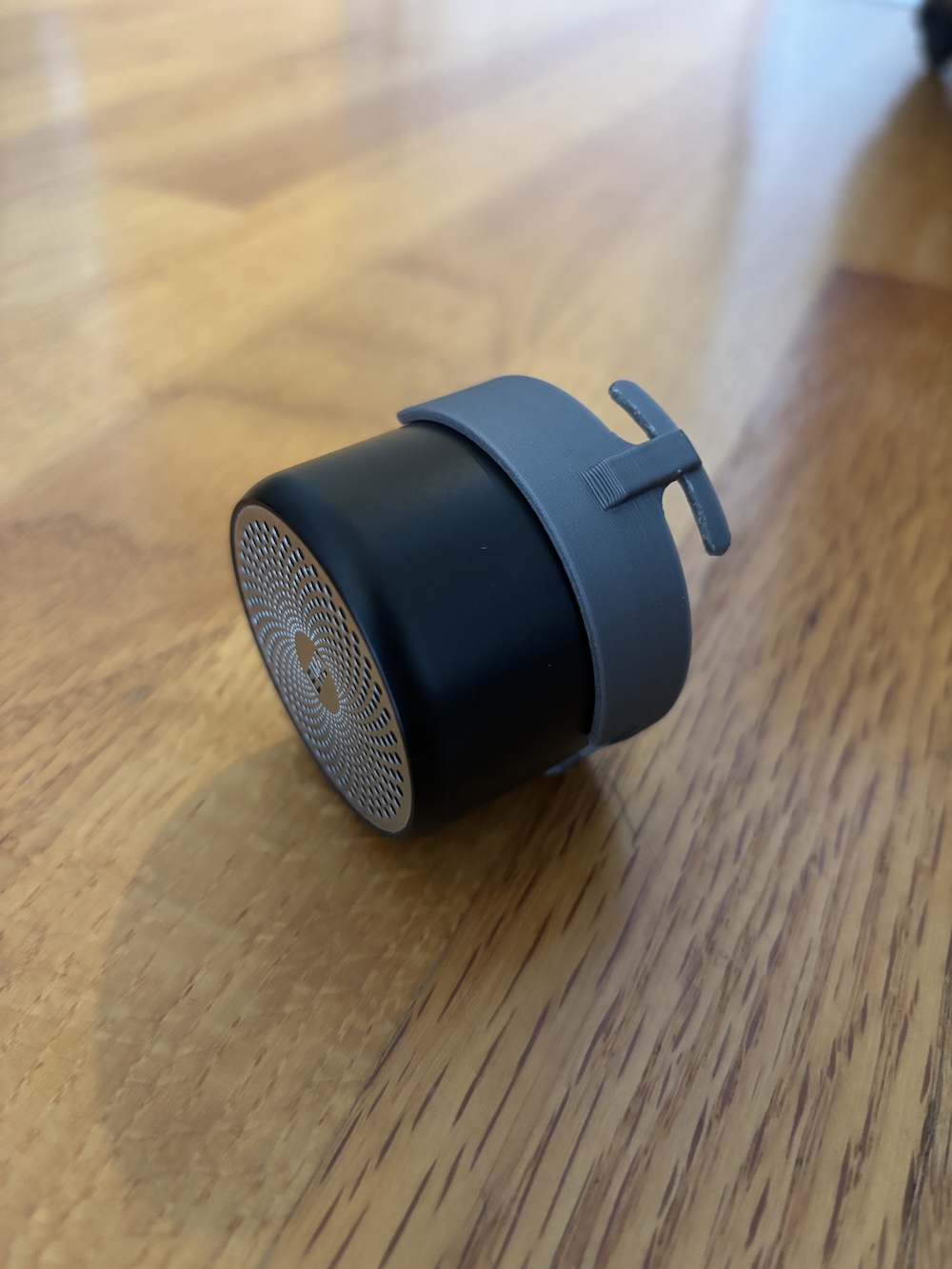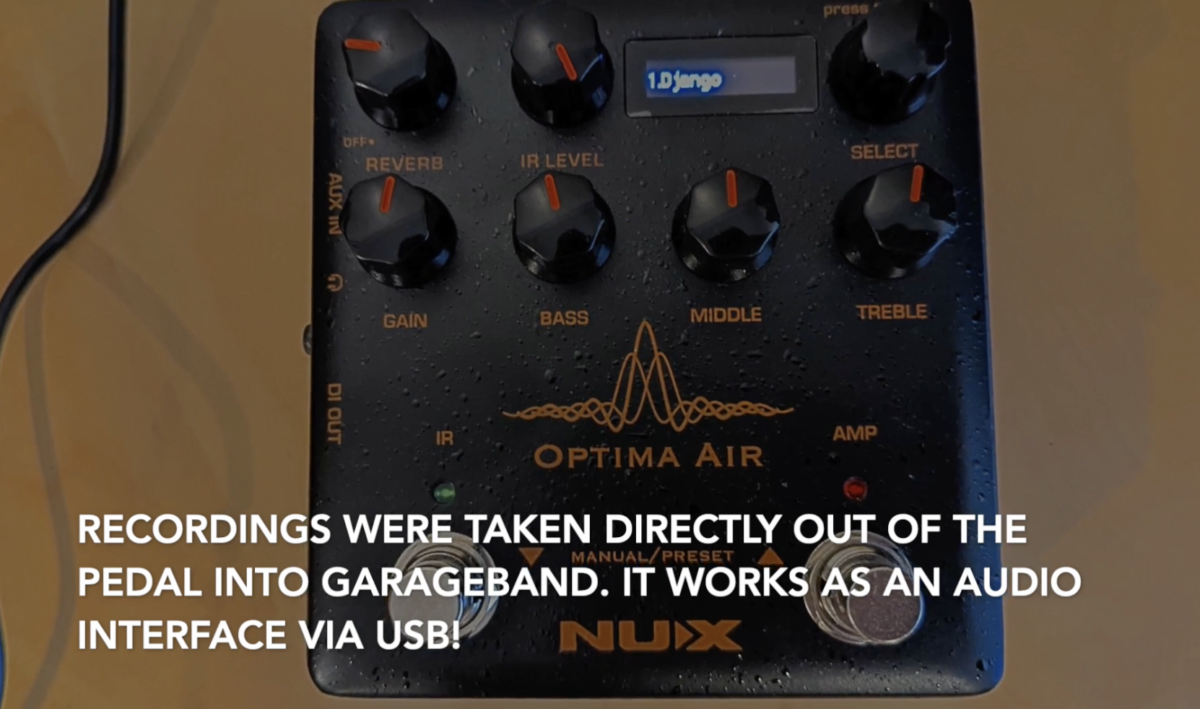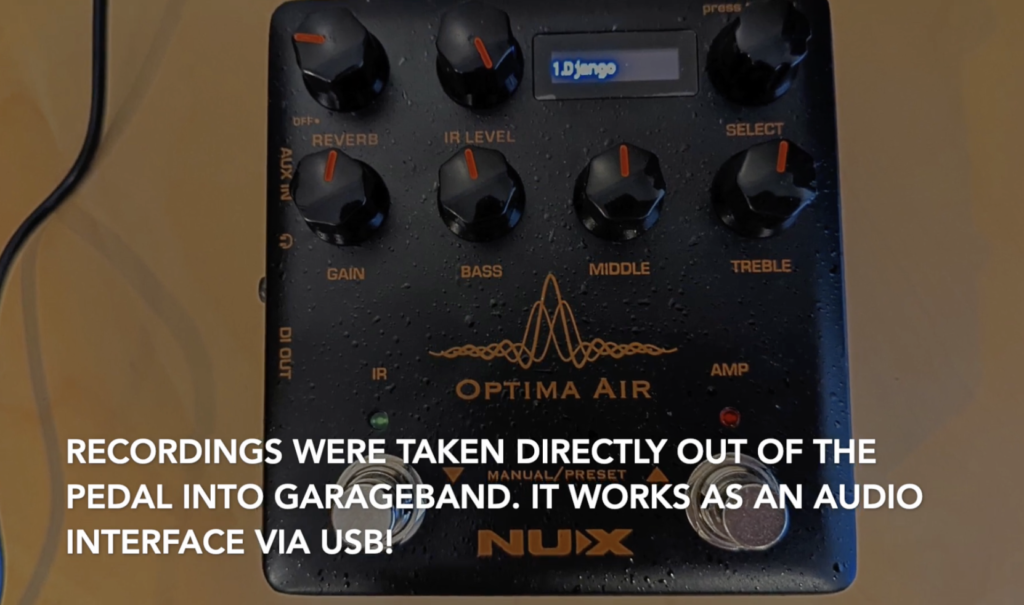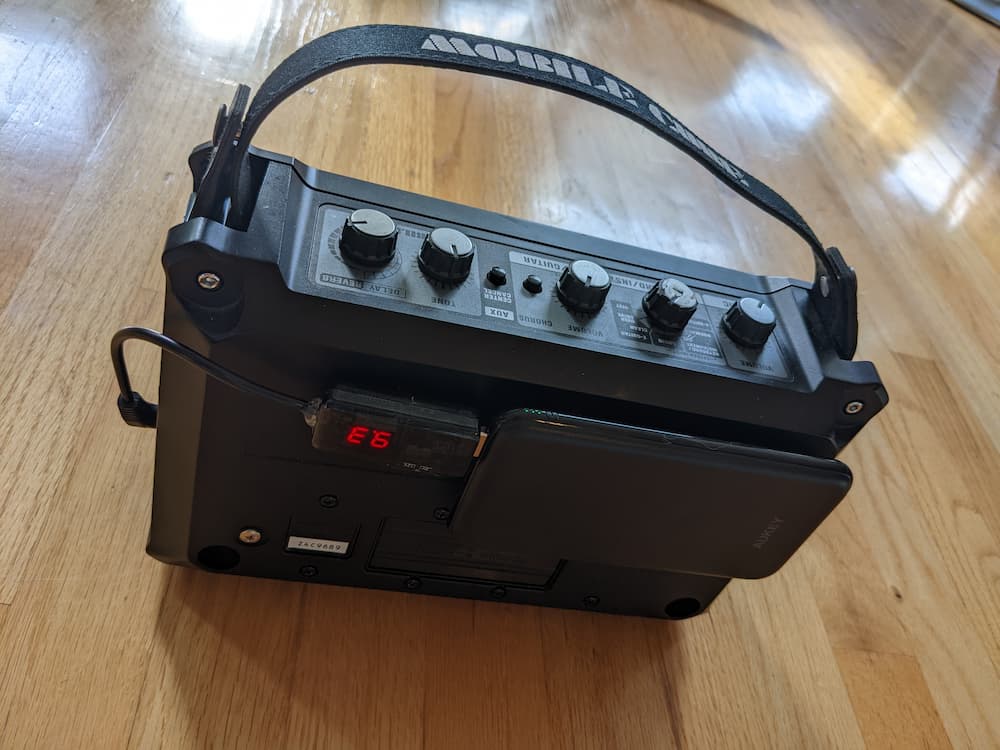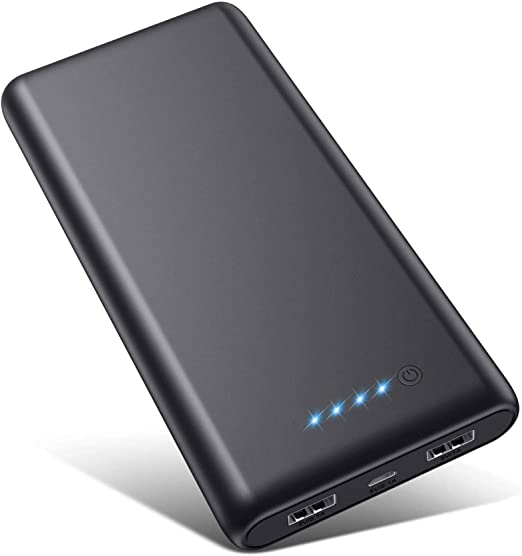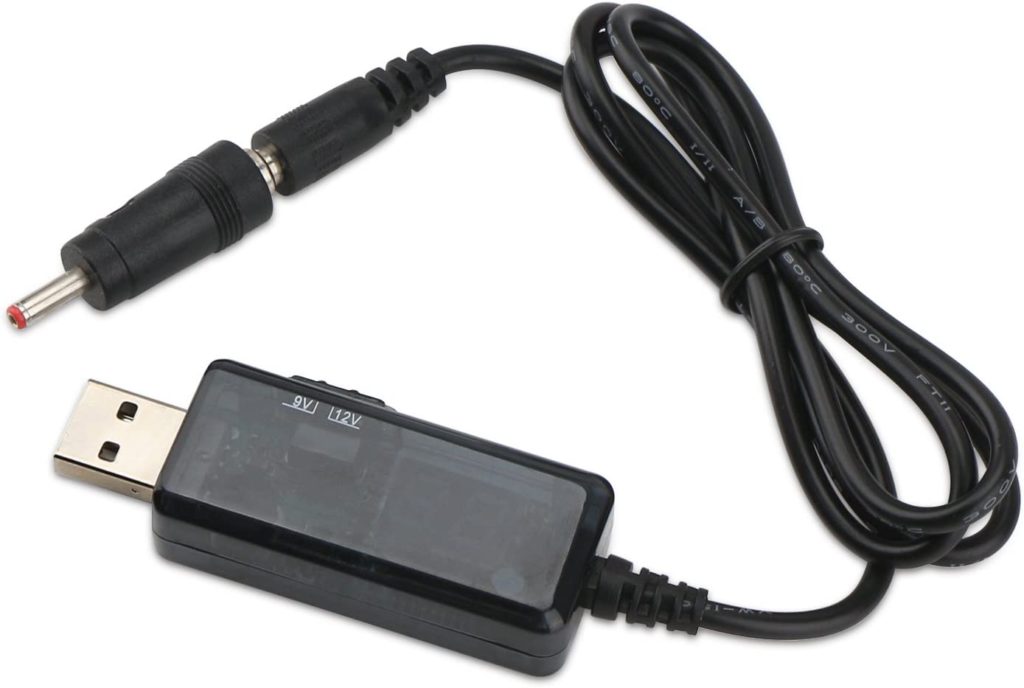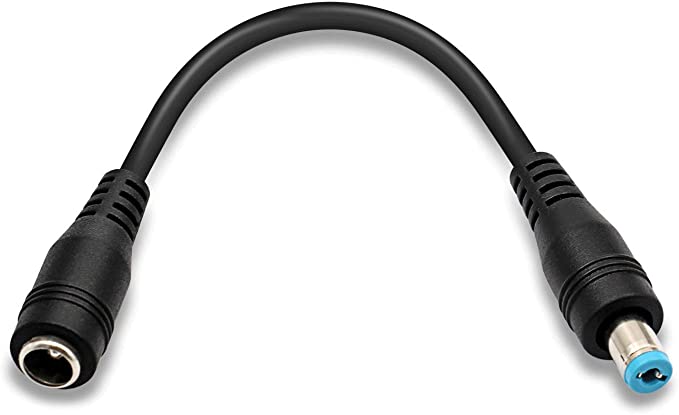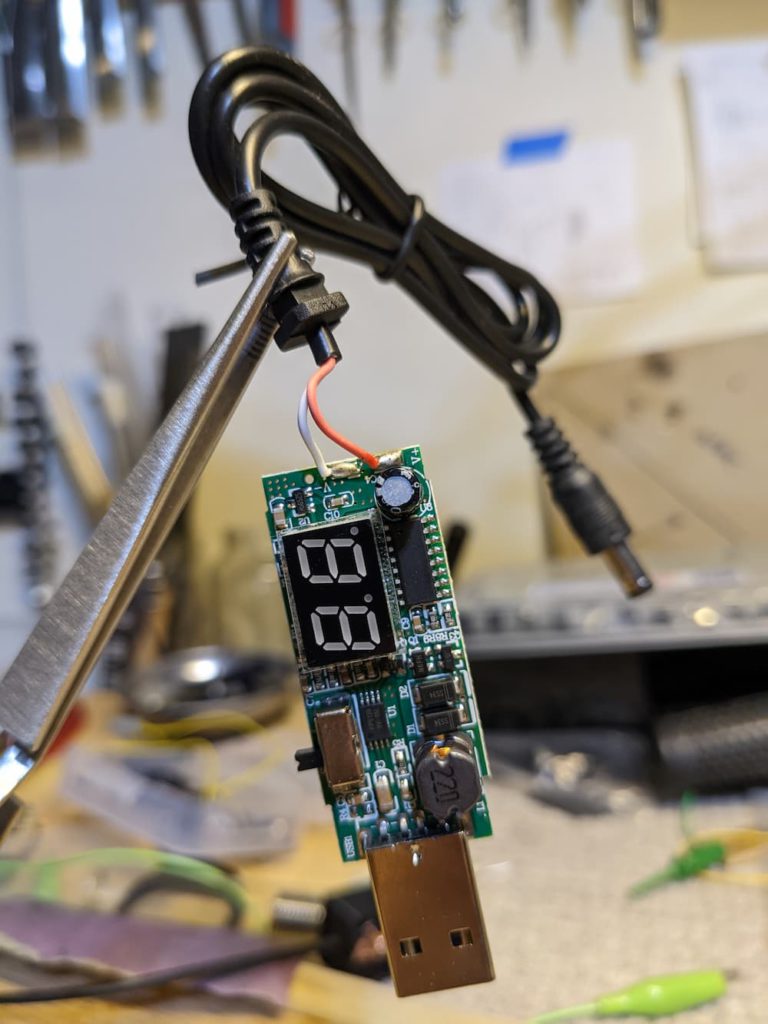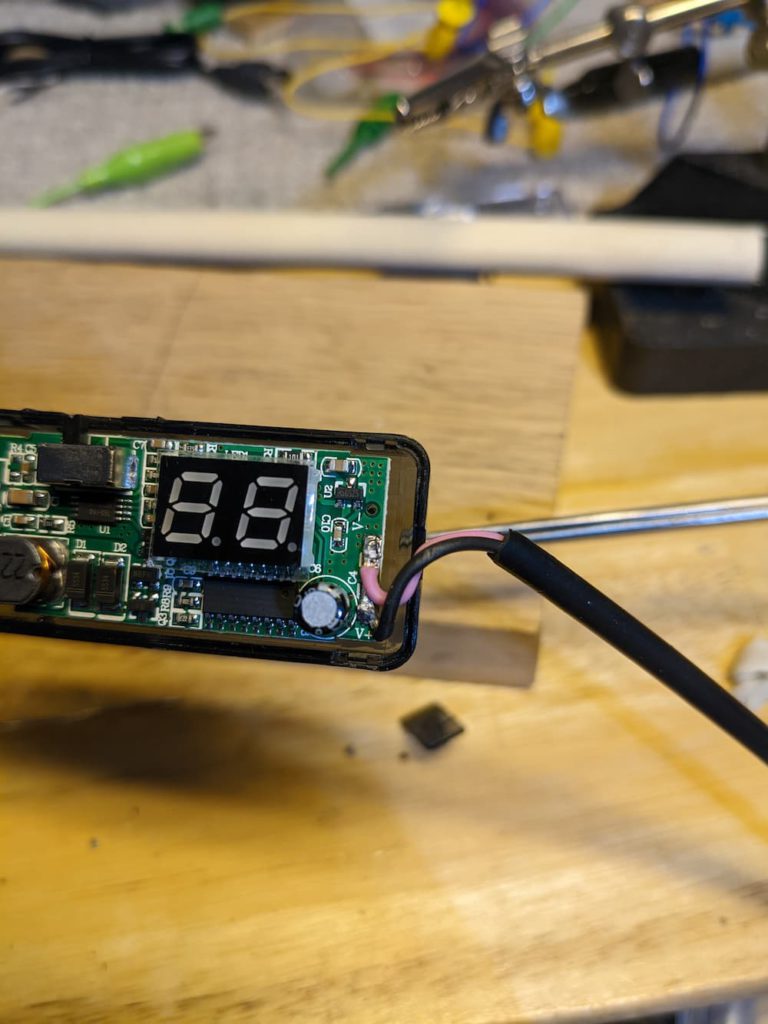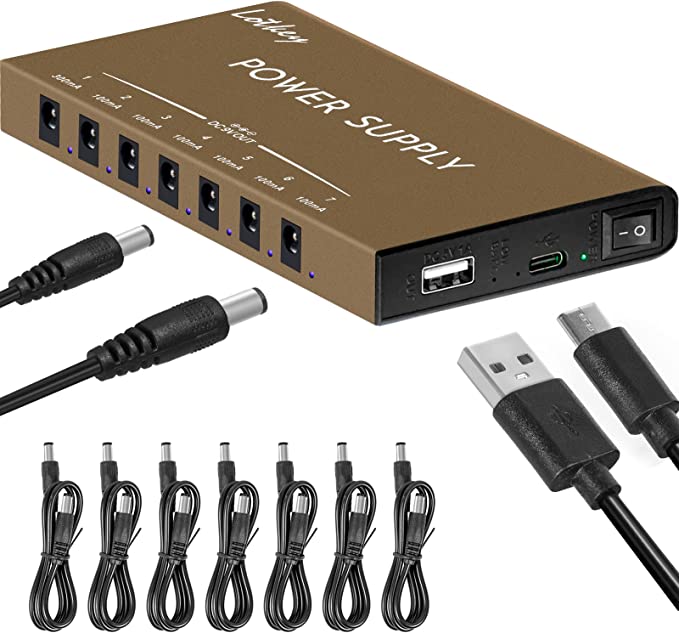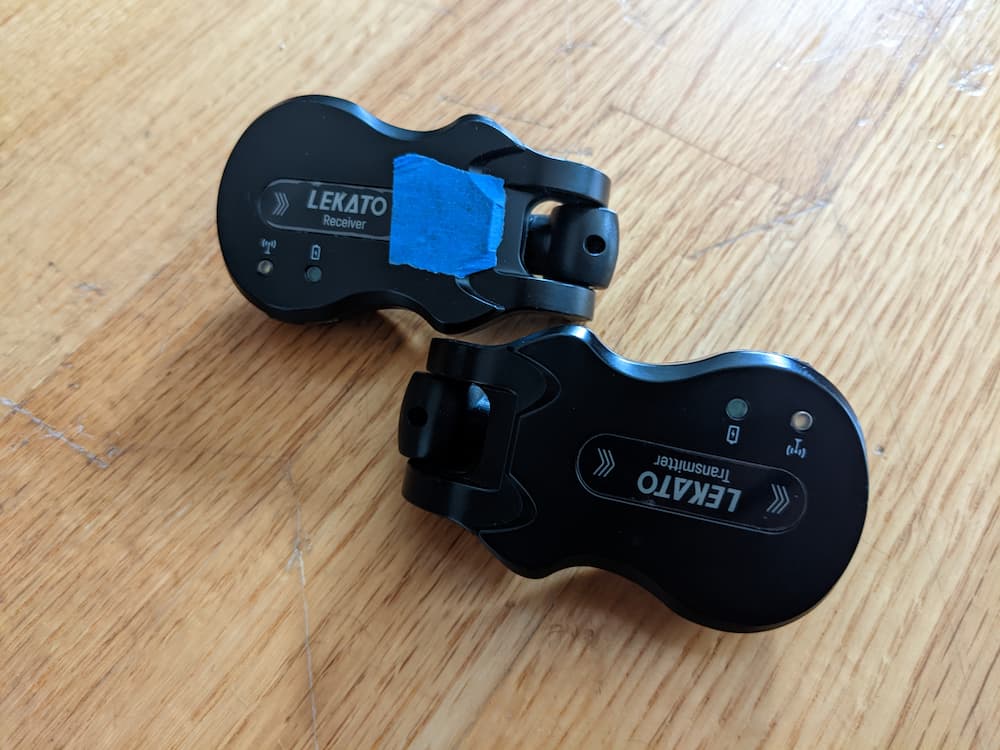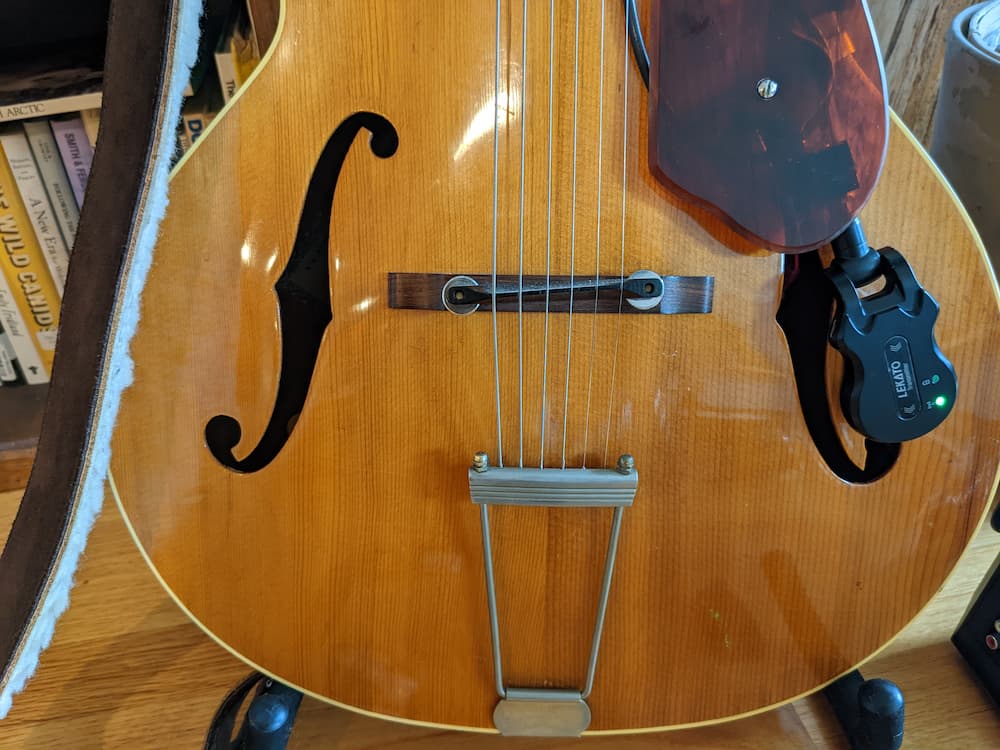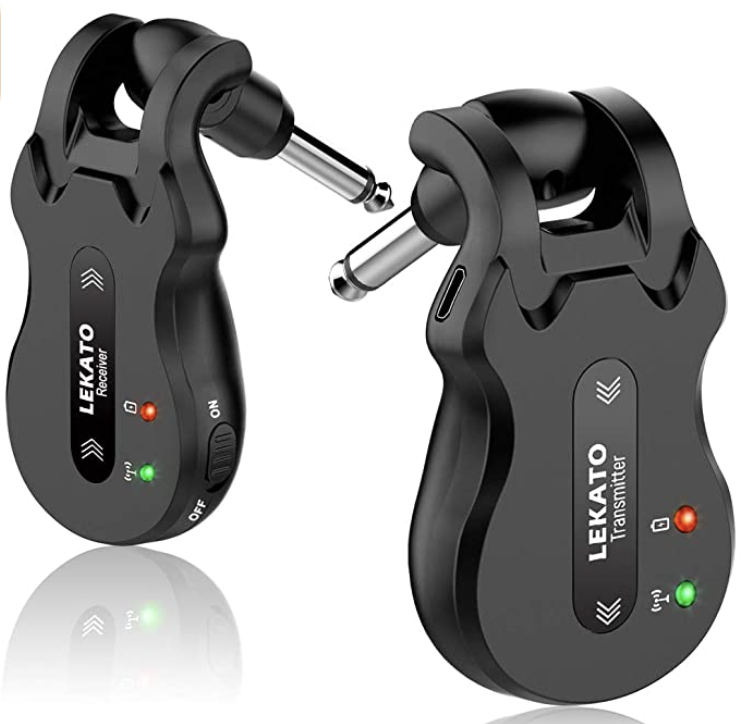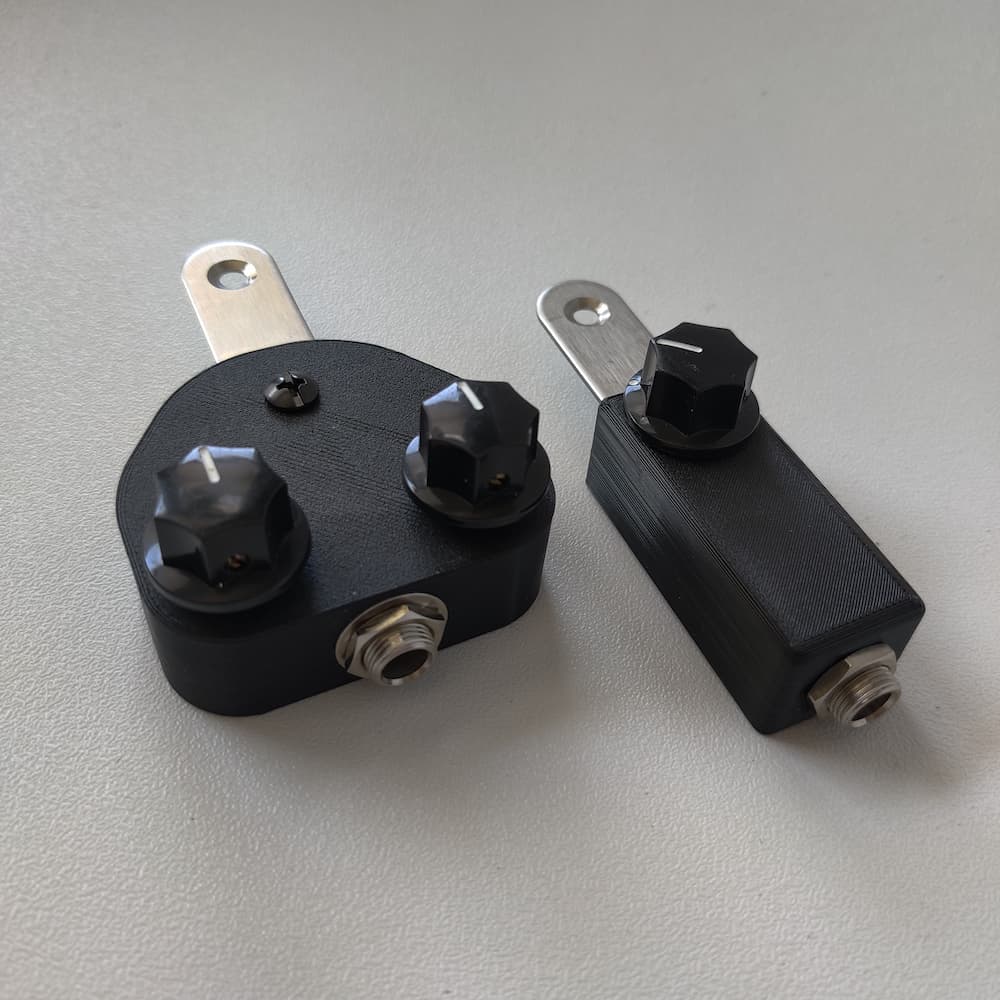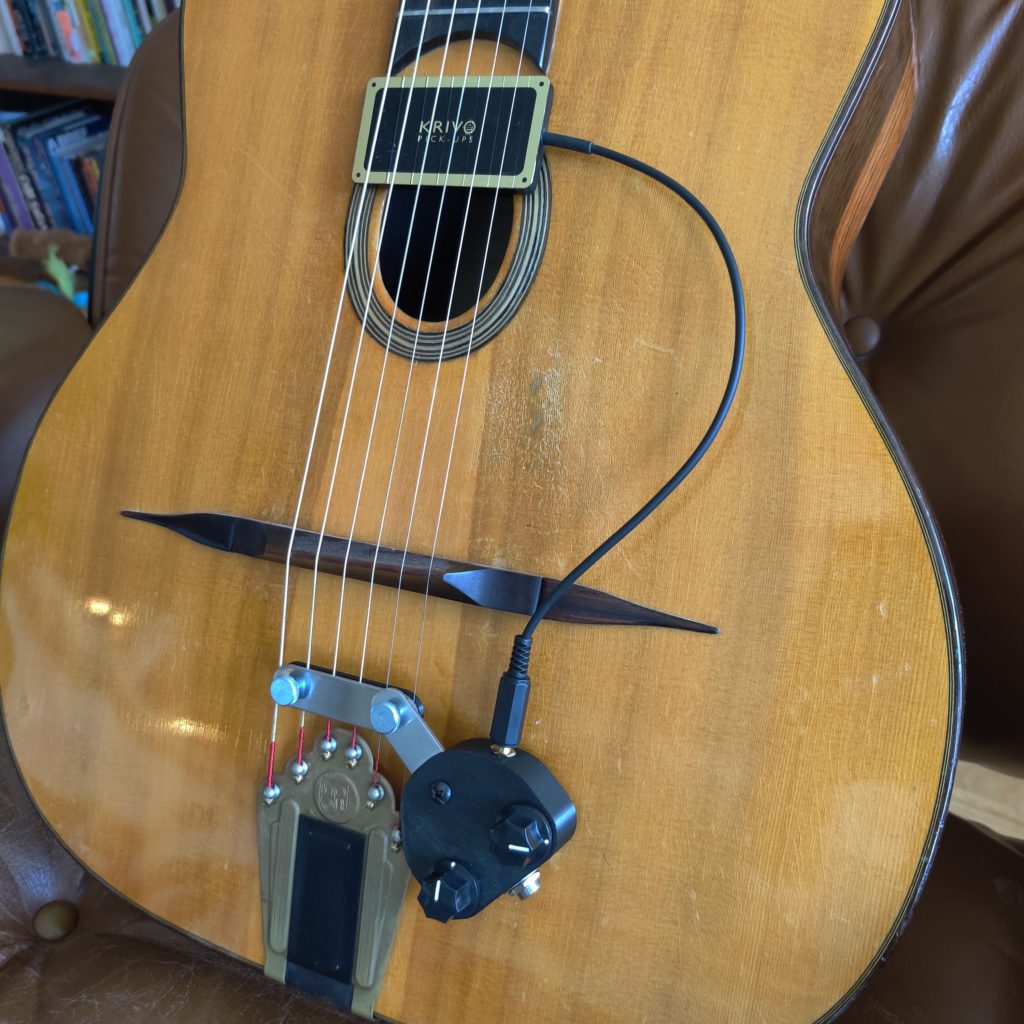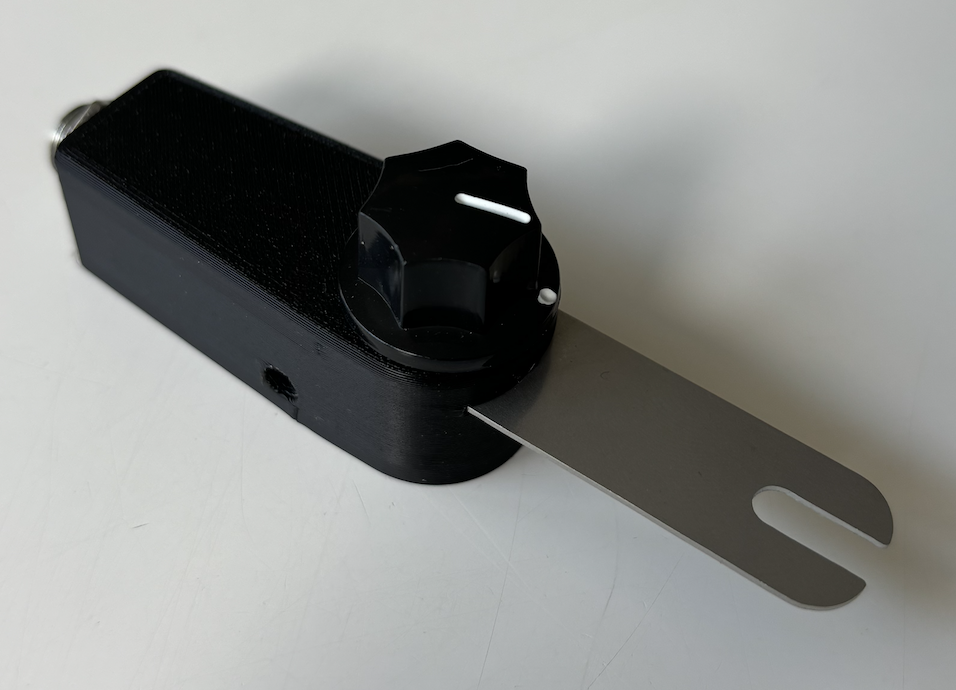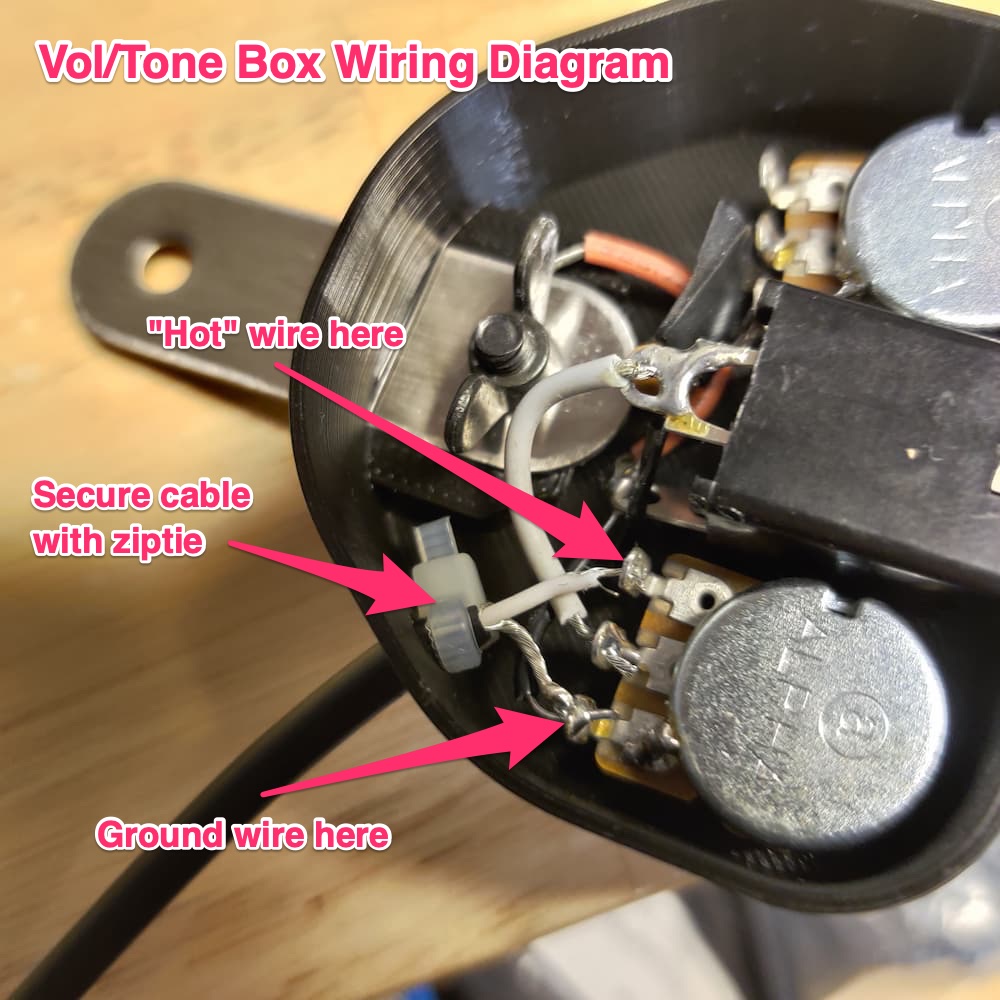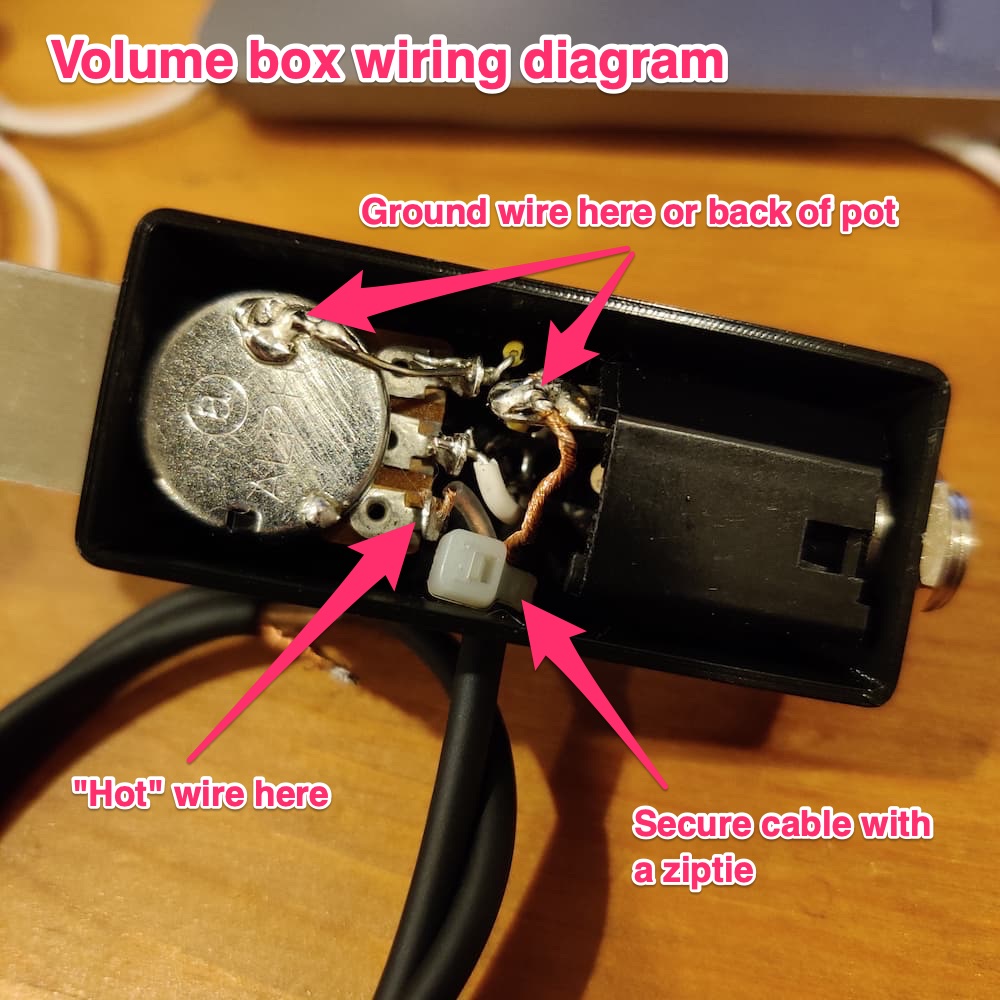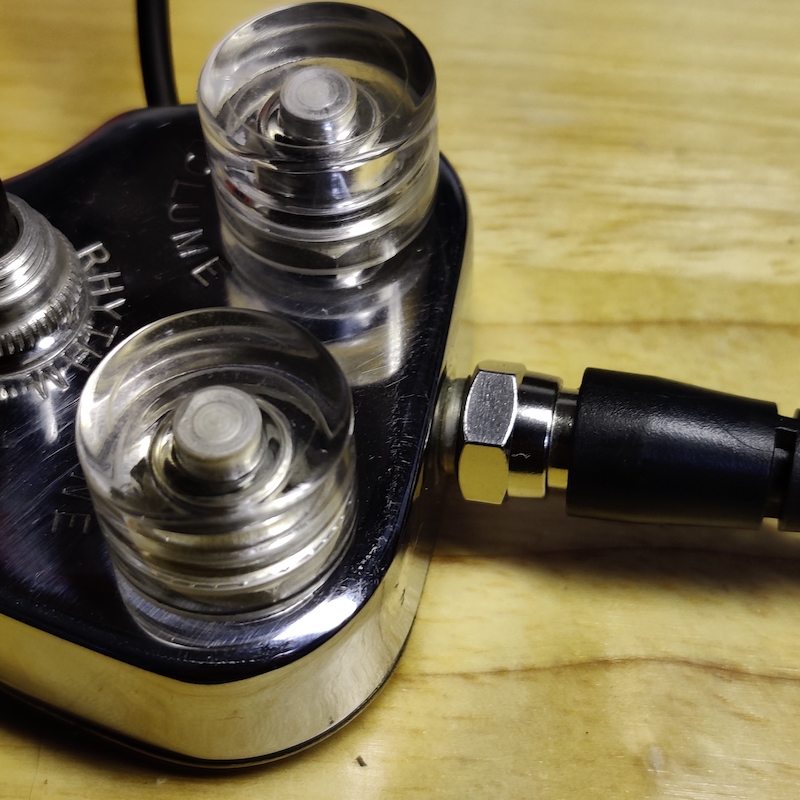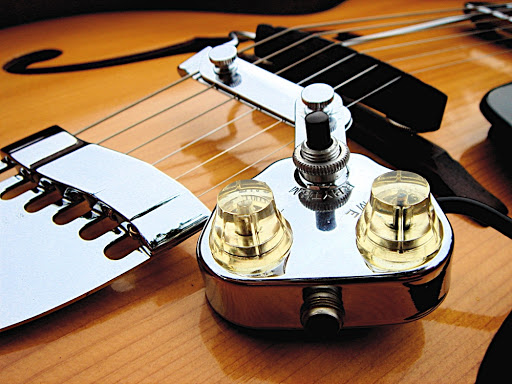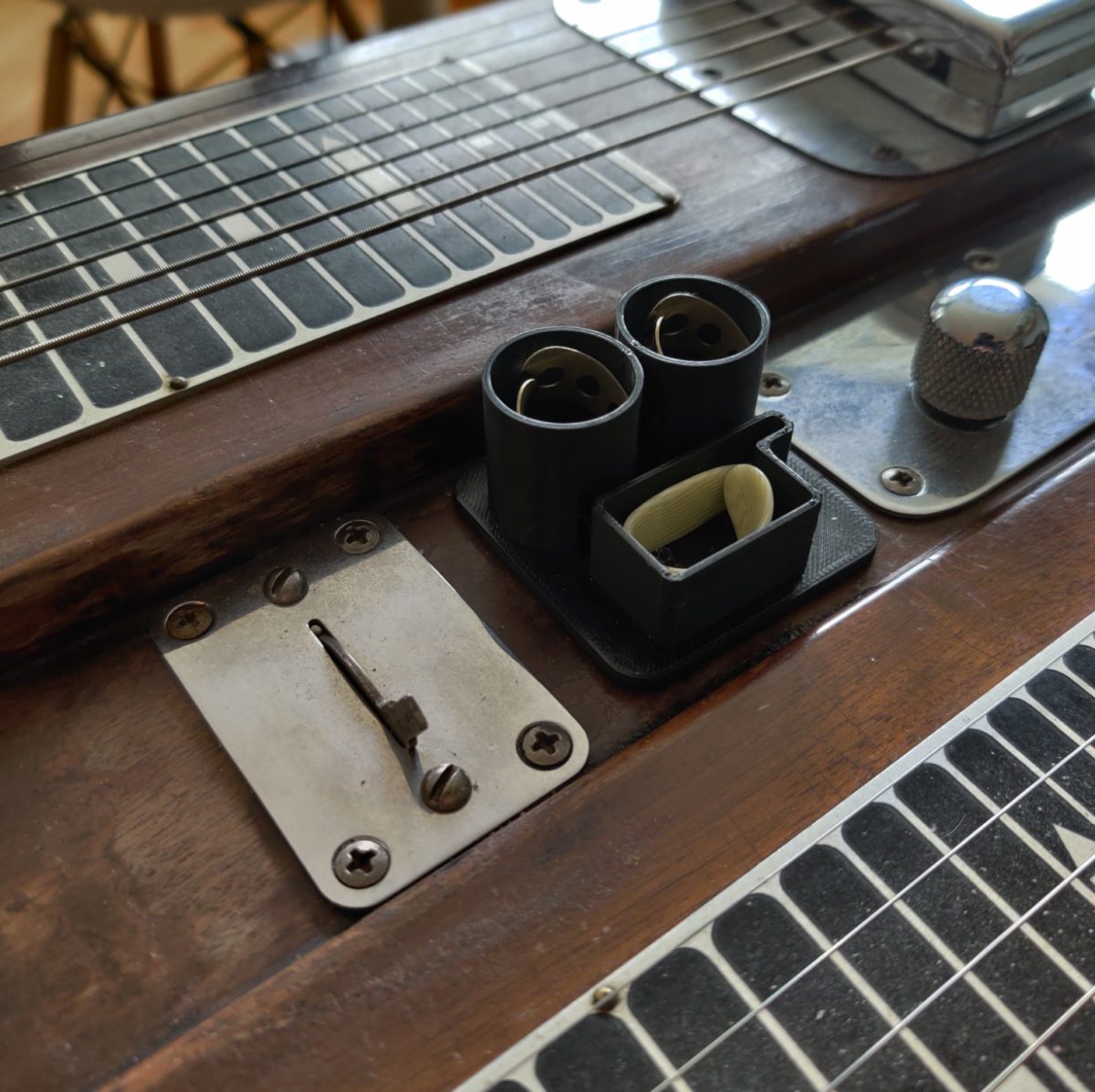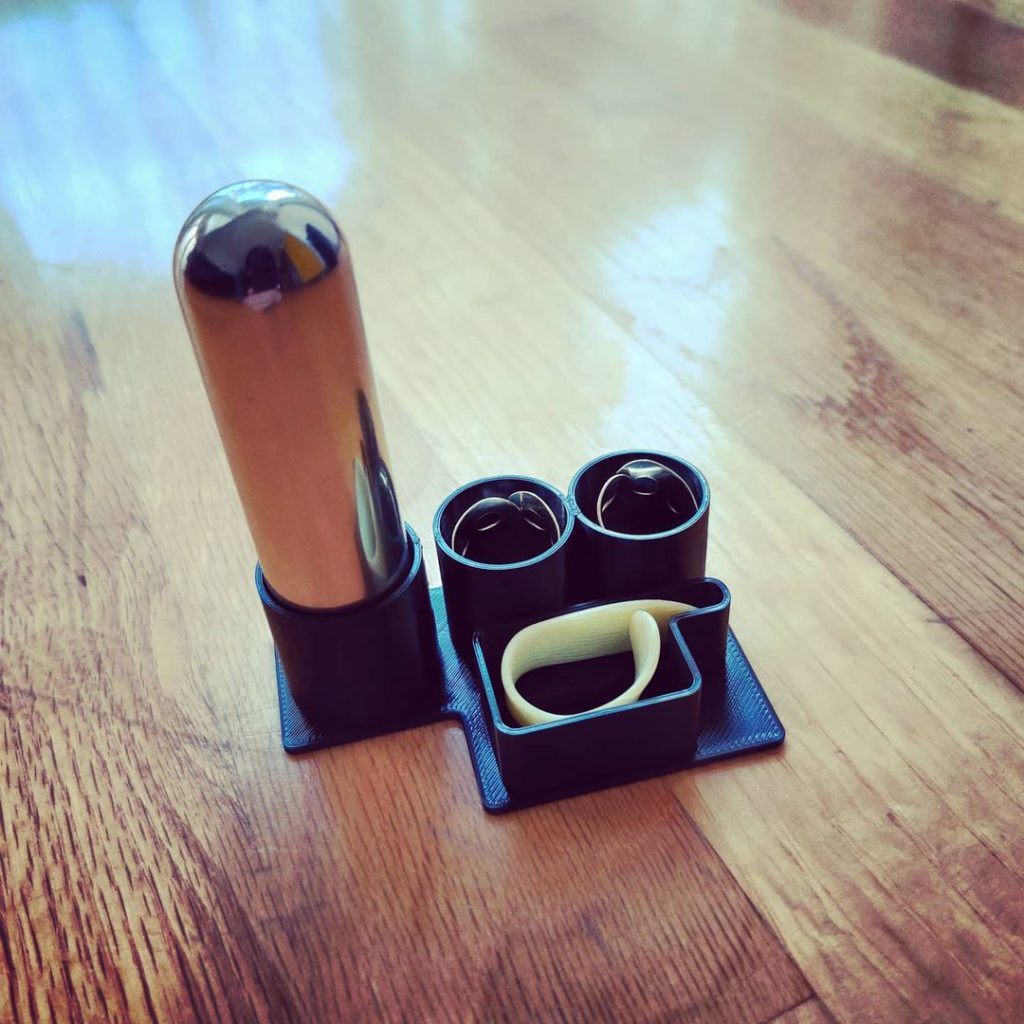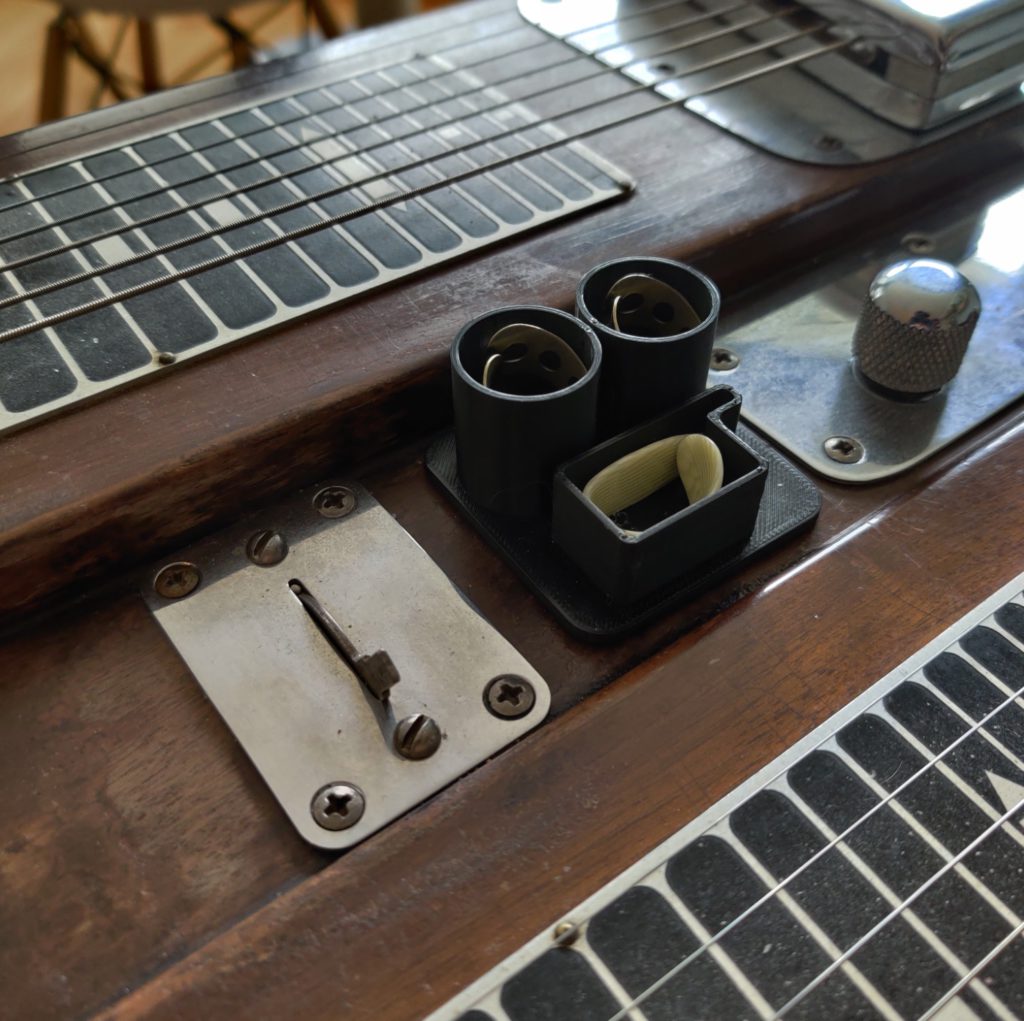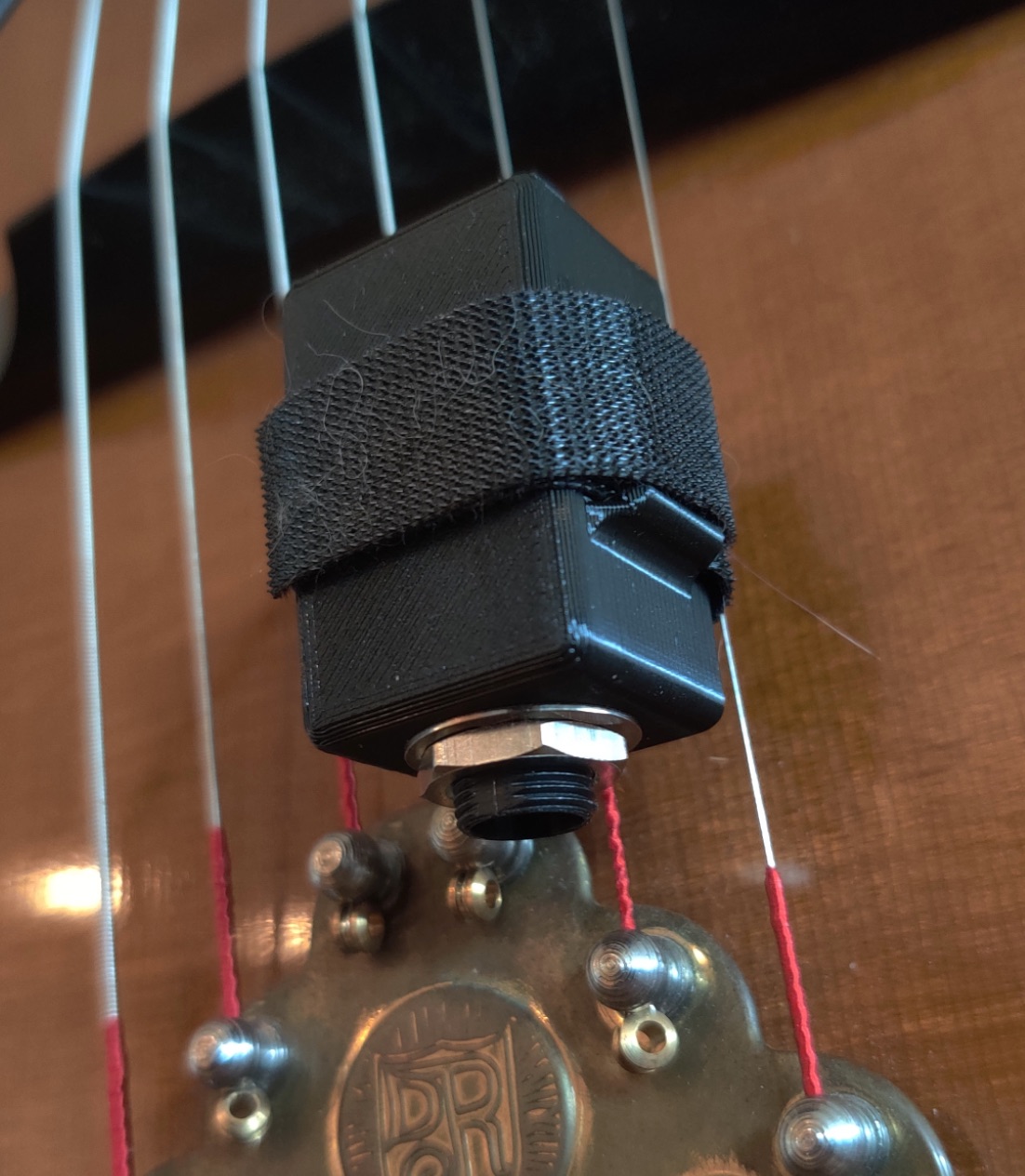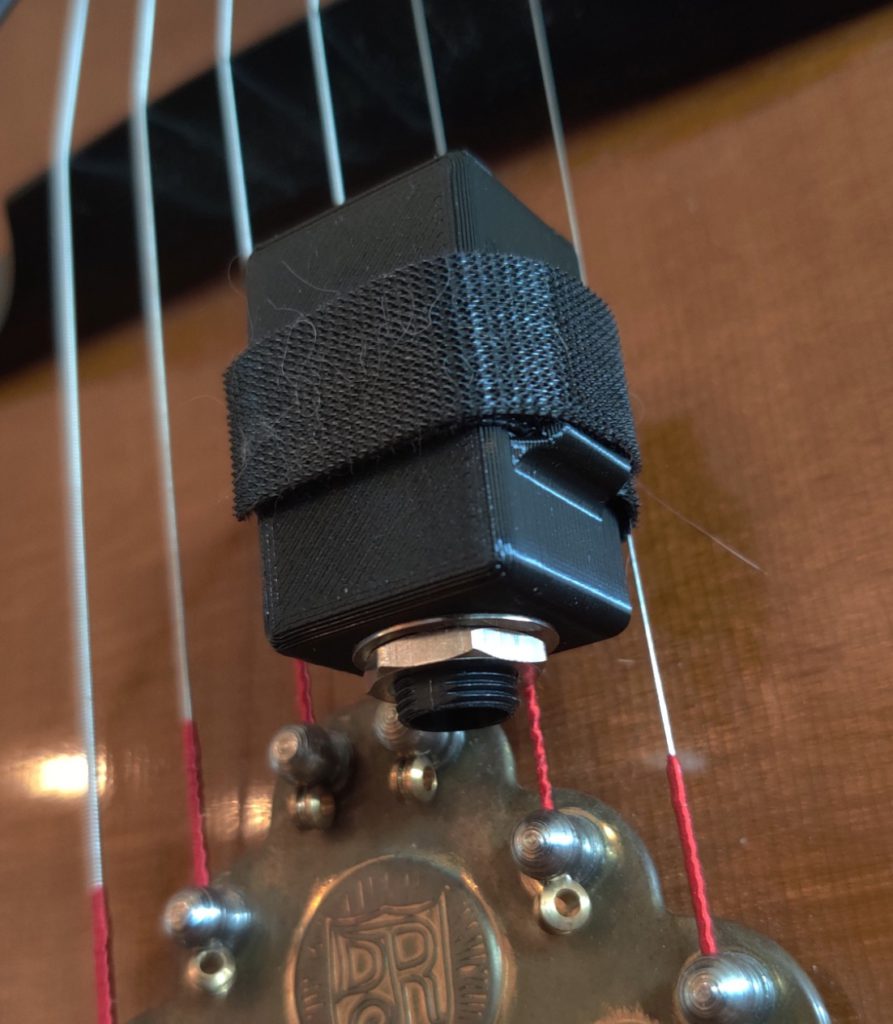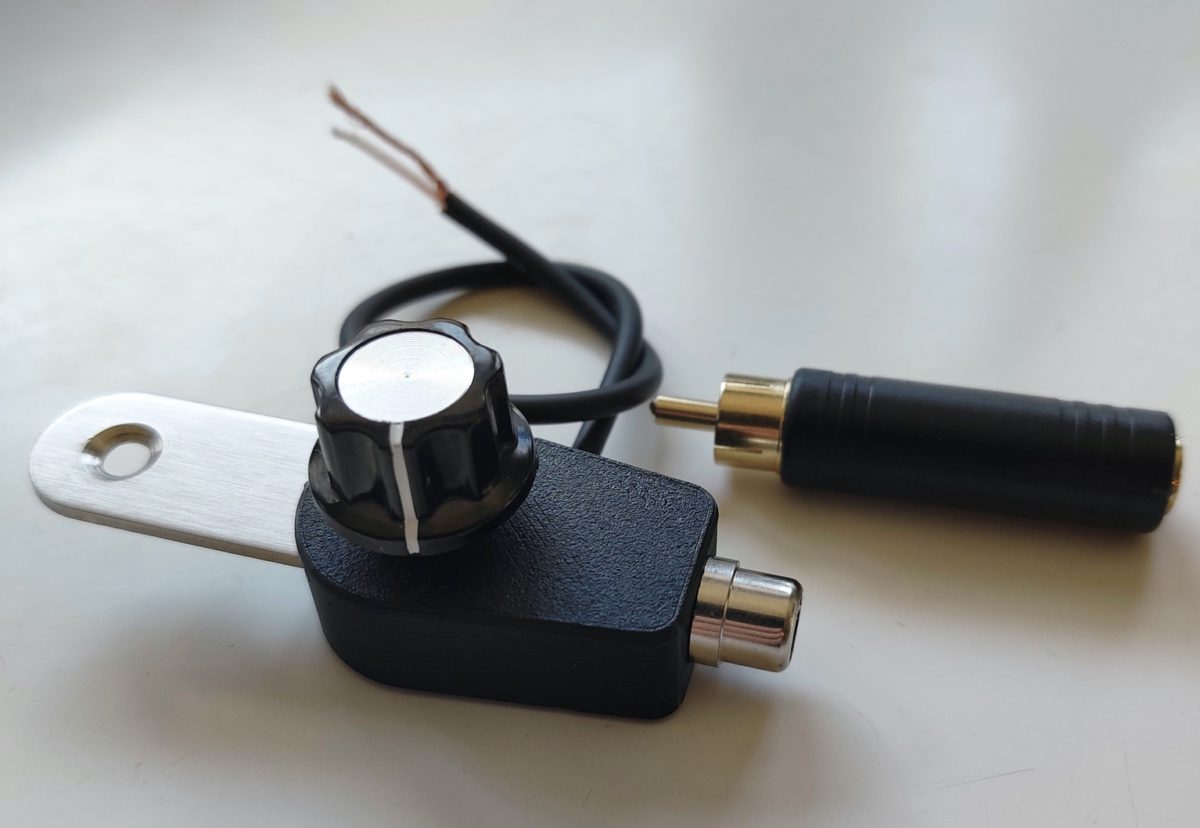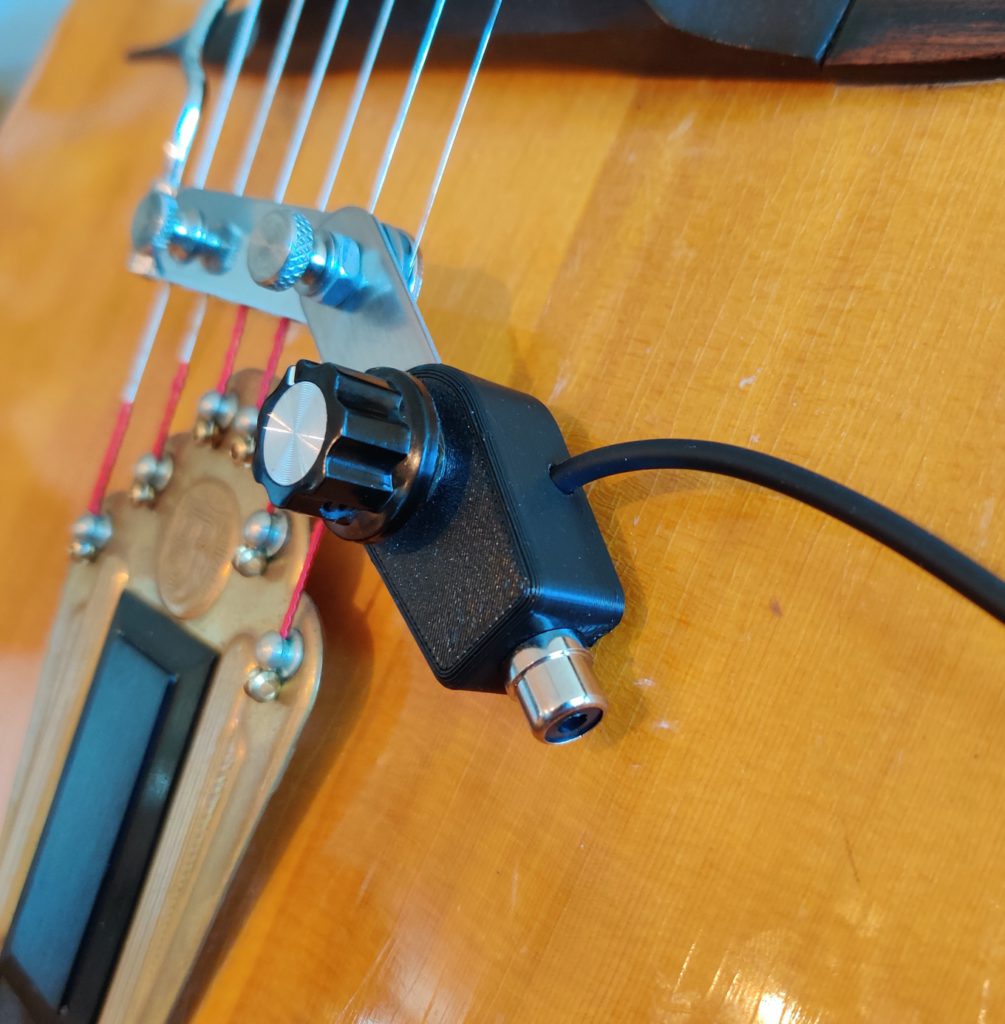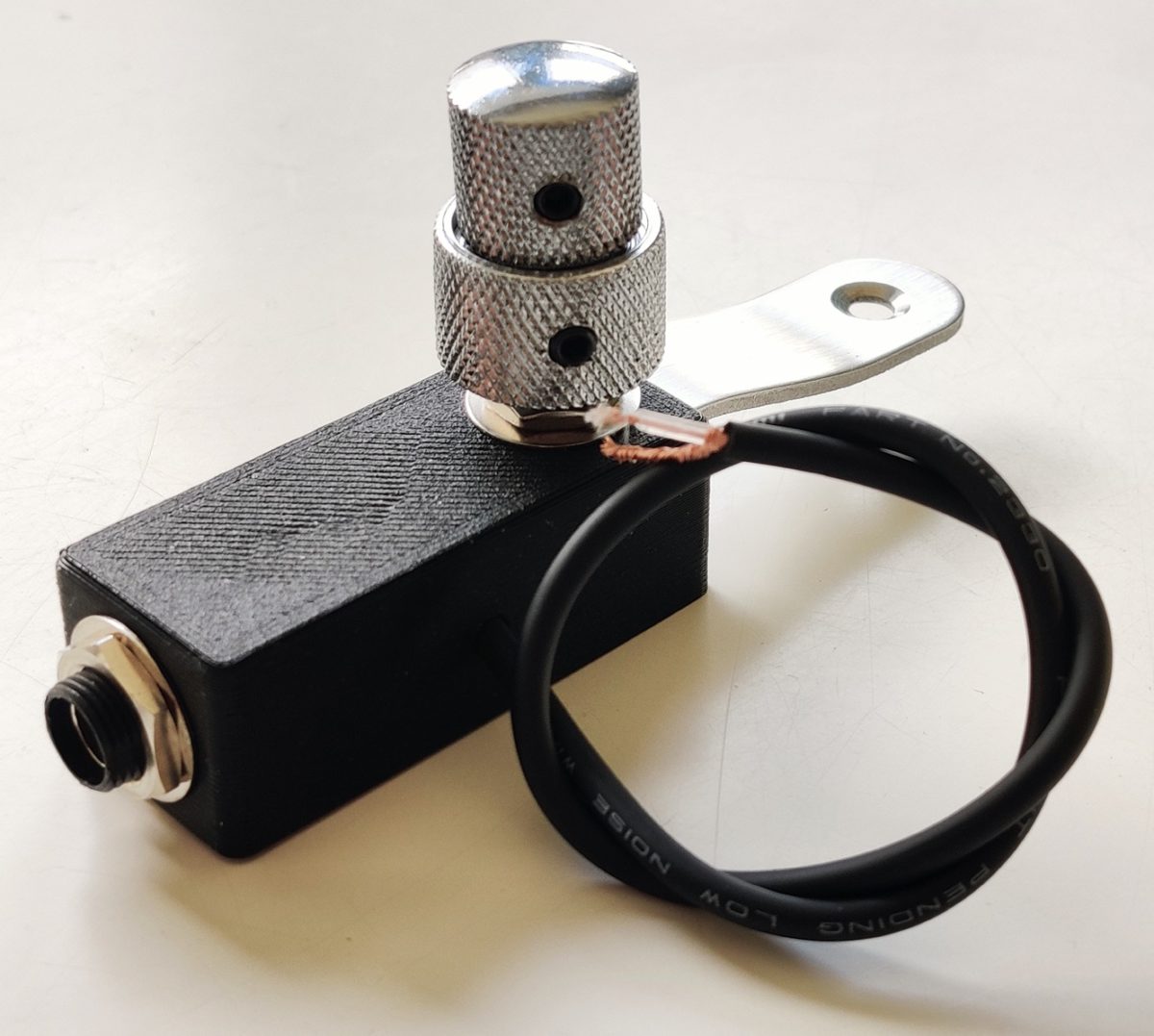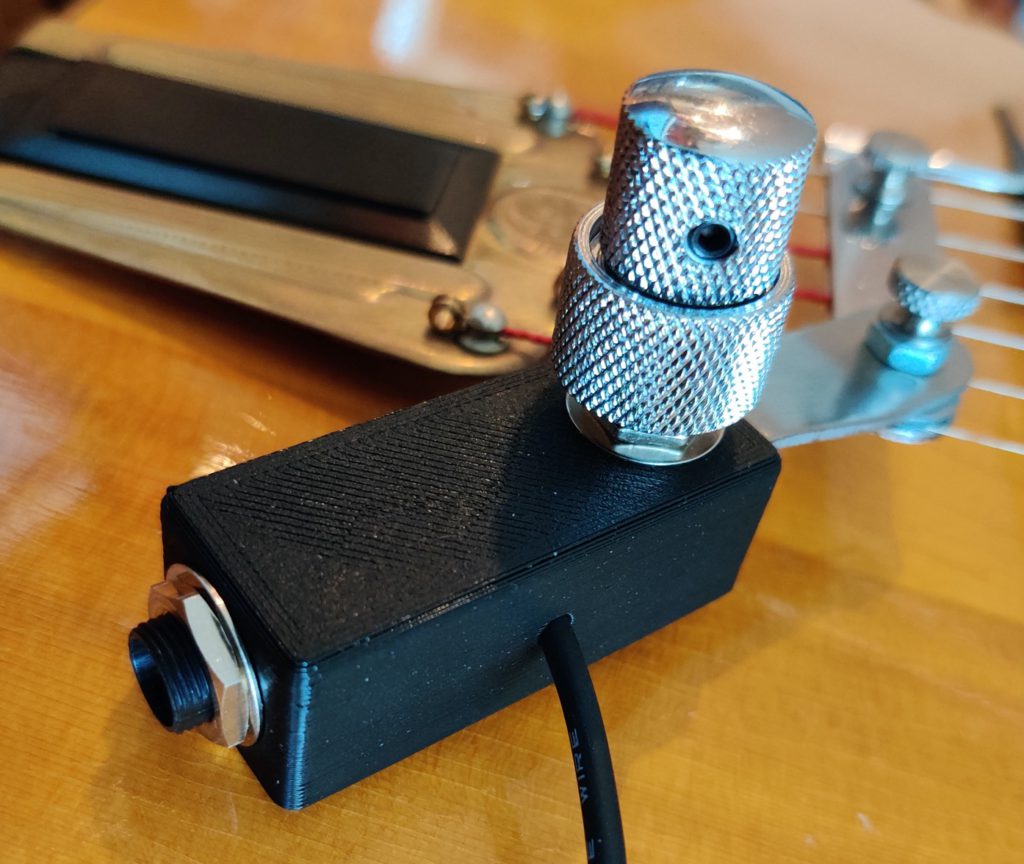Please note: This DIY project is not affiliated with or endorsed by Tone Traveler or DrHerringbone
The Algorithm has been serving me a lot of ads for a product! Well that’s nothing new, but in this case, it’s a device that claims to break-in your guitar and improve its “tone” without going through the often grueling and non-rewarding process of actually playing it. That sure sounds good to me, but it retails for an eyebrow-raising $289, and they even offer a product that is literally called snake oil, if you can believe that.
Like all guitarists, I’m not immune to snake oil, especially if my “tone” (whatever that means) is involved, so I got very curious. Here’s a picture of this thing, and the ad that is now burned into my soul:

Of course, let’s not forget a lot of other things are going on during those years of guitar ownership: it’s hopefully getting played a lot, the wood is aging, stretching/contracting, and if it’s in a heated Queens apartment in the winter, probably dehumidifying and cracking up into a pile of firewood. The question is: can you really expedite all that with a few hours with some magic technology?
It’s probably true that playing a guitar for many years changes its sonic characteristics. My hand-wavy scientific explanation would probably include smart-sounding stuff like “the resonant vibrations of the sound is shaking up the cells in the wood, making the instrument more supple and rich,” and so forth.
So what exactly is this thing?
The device in question clips to the bridge of the guitar and emits sounds which will in turn vibrate the guitar. Now I’ve seen a bluetooth speaker before and this thing sure looks like just that. In fact, judging from the logo, it’s probably this one: EWA 106 on Amazon, which can be had for under $20.
There is the matter of hanging it from the bridge of a guitar, but a thick rubberband that I extracted from a head of broccoli and a bent paperclip did the trick. But if you’re a handy, childless person like myself maybe you’d go to the lengths of 3d-modeling a mount that slides right on this particular speaker, like so:

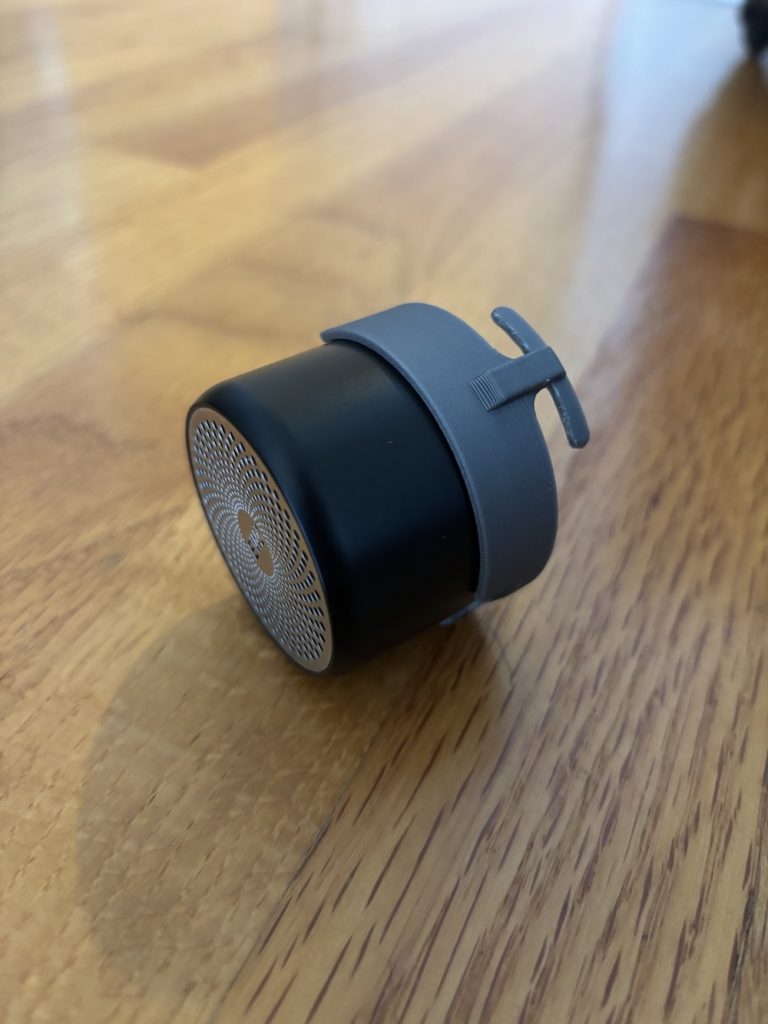
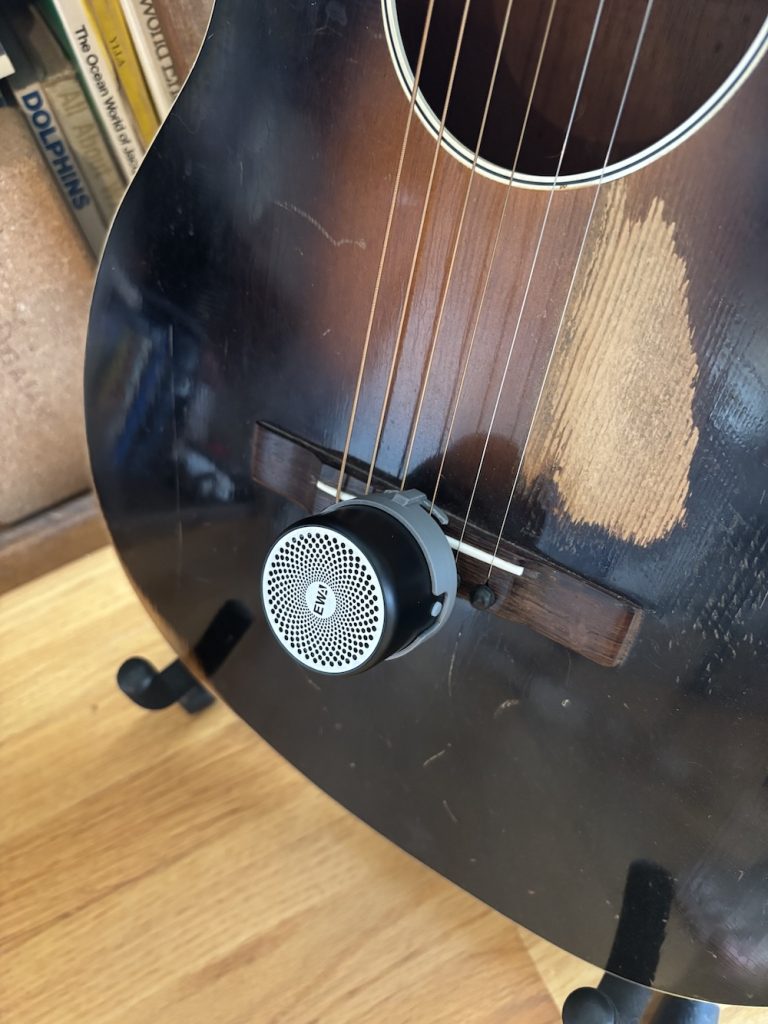
Here’s a link to that 3d model on printables if you want to print it yourself:
https://www.printables.com/model/1345295-guitar-bridge-mount-for-ewa106-bluetooth-speaker
Tone generation
There’s also the tone generation. It also comes with a tablet device and a pre-loaded app, which I assume is paired with the speaker out of the box. The app shows a GUI where you can select individual strings of the guitar to generate those notes.
Well, I’ve also seen a tone generator before, and there are plenty of apps that can do this, but the trick is to find one that can do multiple tones at once. This one: NCH Tone Generator seemed to work fine and was free and available for all platforms.
But in case you don’t need more apps in your life, you can also just find a web-browser based tone generator. Here’s one I found that is nice and configurable, I even pre-loaded the URL with all the frequencies of the 6 strings of a guitar, Online Tone Generator. Just click the on/off button next to each tone to get some creamy sine wave robo-guitar. You can look up the frequencies of specific notes and create another set of tones if you try this on your, say, banjo… but please check your local banjo amplification ordinances before proceeding.
Finally, you can also just download the following mp3 file that I created and play it on loop on the device.
The idea here is you’ll bluetooth pair the speaker to a spare phone, tablet, or laptop. Surely you’ve got a drawer with 3 generations of planned-obsolete devices somewhere. Then open one of these tone generators and let it go for a bunch of hours.
The test
The idea of “tone” is so subjective and non-scientific that I’m not sure that recording me playing a guitar before and after this vibration-bath would yield any tangible result. It’s also impossible to ensure that I’d play the exact same way with the exact same volume and mic placement.
That, and maybe I don’t want to obsess over what 30 second snippet I would play that is both demonstrative and sufficiently impressive in case anyone reading is thinking “can this internet guy actually play?”
But here’s one of those sorts of tests if you want to check it out. I skipped to the section where he does the before/after recordings: Jacob Schuler on YouTube.
The folks behind this product devised an experiment where they mic’ed a guitar and ran the device on it for 4 hours, observing a whopping 10b increase in volume over the course of that time period. That seems like as good a test as any to me.
Here is my test rig:
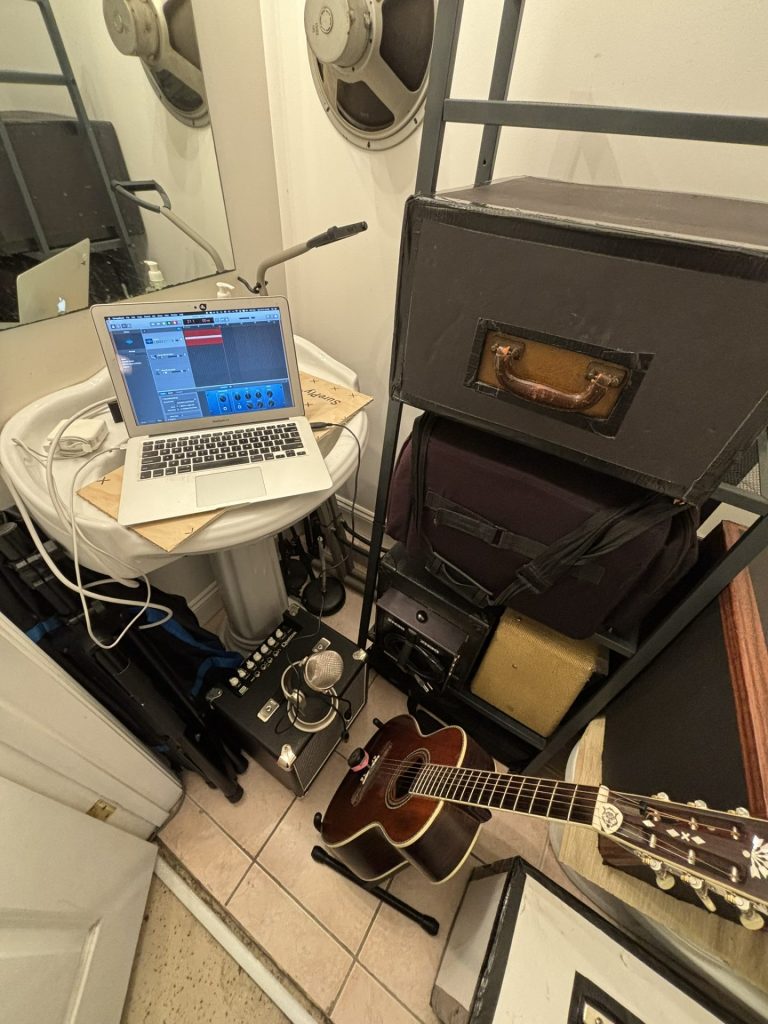
Over the course of the experiment, I would record a short snippet of the guitar and compare the amplitude and visuals sound wave during each of sample time.
Results
Here are the waveforms from the guitar with the “poor man’s tone improver” from the microphone recorded into GarageBand at various intervals in the test:
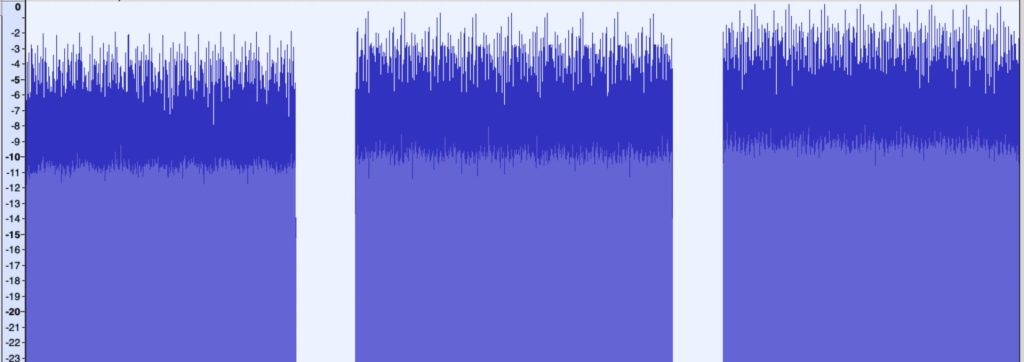
Test 1: 0 hours, 3 hours, and 11 hours
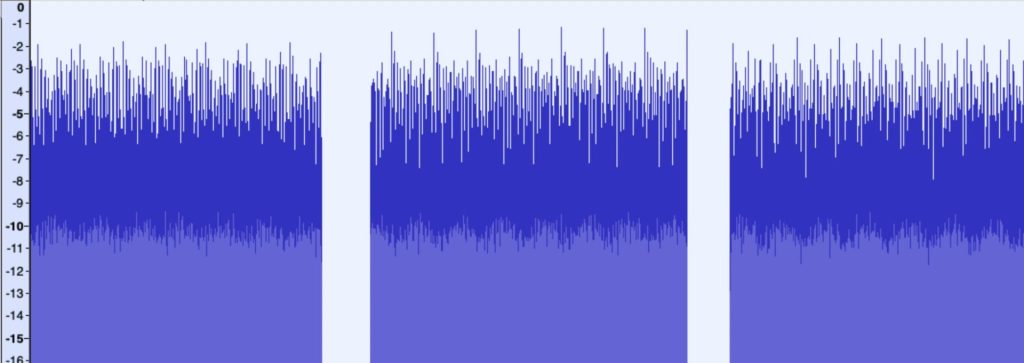
Test 2: 0 hours, 3 hours, and 8 hours
As you can see in Test 1 there is a visible 2db volume increase the peaks of the wave.
In test 2, there is no significant volume change. Perhaps half a decibel if I squint just right. The dynamic range seems to have increased though, as the distance between the peaks and valleys is higher on the later samples.
Enough “science” what about the “vibe test”?
Playing the guitar, it does feel a bit richer in overtones. Perhaps a bit louder too. But I really think these things are so subjective and can’t say for certain if its anything I can quantify or if it’s just my imagination. Honestly, I think we hear what we want to hear. If I dropped almost $300 on this thing maybe I’d want to hear lots of things.
While I believe my methods are scientifically precise, there is a lot to be said for recording actual music before and after and not just drone tones. I’ll give that experiment a shot when I find the time, but I’ve been too busy… well… actually playing music on my guitar.
Since doing this experiment over a year ago, I have not been compelled to repeat it on any other instruments. In fact I only thought to finally publish this article because someone asked me about it. I imagine if you’re anything like me, the same would happen to you: you’d mess around with it for a week and then would gather dust. The difference is that if you actually bought one, your wallet would be a lot lighter.
